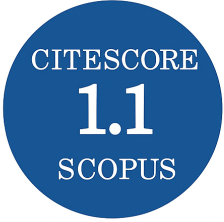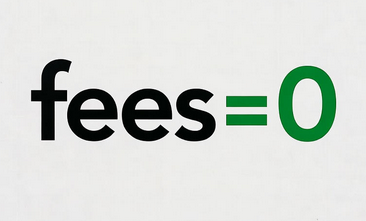Live Firing and 3D Numerical Investigation of Base Bleed Exit Configuration Impact on Projectile Drag
DOI:
https://doi.org/10.3849/aimt.01529Keywords:
aerodynamics, base bleed, CFD, drag reduction, live firing, range extensionAbstract
Base bleed, in which gases are discharged at the base of projectile, is confirmed to be an effective drag reduction technique. Itis believed that the design of base exit can impact the pattern of gas bleeding and, hence, the level of drag reduction. The present study is aimed to address this dependence that was not clarified in previous studies by examining the reduction in drag acting on a projectile with two different base bleed exit configurations. The first configuration includes a central circular orifice while the other is modified to include a smaller central circular orifice and four annular slots with equivalent total area. Numerical simulations on 3‑D computational domain have been conducted to estimate drag and to explore the base flowfield for each configuration. The computational results at different Mach numbers have been compared with the mean drag based on range shooting for projectiles with both base configurations. In addition, different simulations have been performed to predict the real pattern of bleeding through the modified configuration based on the comparison with firing data at different Mach numbers.
References
IBRAHIM, A. and A. FILIPPONE. Effect of Porosity Strength on Drag Reduction of a Transonic Projectile. Journal of Aircraft, 2007, 44, pp. 310-316. DOI 10.2514/1.23613.
VISWANATH, P.R. Passive Devices for Axisymmetric Base Drag Reduction at Transonic Speeds. Journal of Aircraft, 1988, 25(3), pp. 258-262. DOI 10.2514/3.45586.
VISWANATH, P.R. and S.R. PATIL. Effectiveness of Passive Devices for Axisymmetric Base Drag Reduction at Mach 2. Journal of Spacecraft and Rockets, 1990, 27(3), pp. 688-691. DOI 10.2514/3.26130.
VISWANATH, P.R. Flow Management Techniques for Base and Afterbody Drag Reduction. Progress in Aerospace Science, 1996, 32, pp. 79-129. DOI 10.1016/0376-0421(95)00003-8.
VISWANATH, P.R. Drag Reduction of Afterbodies by Controlled Separated Flow. AIAA Journal, 2001, 39(1), pp. 73-78. DOI 10.2514/2.1272.
IBRAHIM, A. and A. FILIPPONE. Effect of Streamwise Slots on the Drag of a Transonic Projectile. Journal of Aircraft, 2007, 44, pp. 1865-1876. DOI 10.2514/1.30439.
SMITHEY, W., M. NABER, G. CASWELL and A.E. FUHS. External Burning Assisted Projectile- Theory and Experiment. In: 9th Propulsion Conference. Las Vegas: American Institute of Aeronautics and Astronautics and Society of Automotive Engineers, 1973. DOI 10.2514/6.1973-1193.
SMITHEY, W. and A.E. FUHS. Projectile Thrust-Drag Optimization with External Burning. Journal of Aircraft, 1977, 14(11), pp. 1025-1026. DOI 10.2514/3.58886.
SCHETZ, J., F. BILLIG and S. FAVIN. Analysis of Base Drag Reduction by Base and/or External Burning. AIAA Journal, 1981, 19(9), pp. 1145-1150. DOI 10.2514/3.60053.
MEHTA, G.K. and W.C. STRAHLE. Analysis of Axially Symmetric External Burning Propulsion for Bluff-Base Bodies, AIAA Journal, 1979, 17(3), pp. 269-270. DOI 10.2514/3.61111.
KORKEGI, R.H. and L.M. FREEMAN. Aft-Body Drag Reduction by Combined Boat-Tailing and Base Blowing at M = 3. AIAA Journal, 1976, 14(8), pp. 1143-1145. DOI 10.2514/3.7206.
ANDERSON, K., N.E. GUNNERS and R. HELLGREN. Swedish Base Bleed-Increasing the Range of Artillery Projectiles through Base Flow. Propellants and Explosives, 1976, 1, pp. 69-73. DOI 10.1002/prep.19760010402.
ZAKI, A., M.S. ABDEL-KADER and H. YAKOUT. Performance of Artillery Projectiles with Base Bleed Unit. In: 8th International Conference on Aerospace Scienses & Aviation Technology. Cairo: Military Technical College, 1999, pp. 71-84. DOI 10.21608/asat.1999.24873.
ZHANG, L., Y.-H. ZHOU, Y.-G. YU and W. ZHAO. Study on Firing Range Dispersion of Base Bleed Projectile Caused by Inconsistent Base Bleed Unit Working. In: 25th International Symposium on Ballistics. Beijing: China Ordnance Society, 2010, pp. 258-285.
KADIC, S.S., B. ZECEVIC, J. TERZIC and A. CATOVIC. Influence of Local Atmosphere Characteristics to Range of 155 mm M864 Projectile. In: 15th Seminar of New Trends in Research of Energetic Materials. Pardubice: University of Pardubice, 2012, pp. 790-799. ISBN 978-80-7395-480-2.
MATHUR, T. and J.C. DUTTON. Velocity and Turbulence Measurements in a Supersonic Base Flow with Mass Bleed. AIAA Journal, 1996, 34(6), pp. 1153-1159. DOI 10.2514/3.13206.
SAHU, J. and C.J. NIETUBICZ. Navier-Stokes Computations of Projectile Base Flow with and without Mass Injection. AIAA Journal, 1985, 23(9), pp. 1348-1355. DOI 10.2514/3.9091.
CLAYDEN, W.A. and J.E. BOWMAN. Cylindrical Afterbodies at M Sub Infinity Equals 2 with Hot Gas Ejection. AIAA Journal, 1968, 6(12), pp. 2429-2431. DOI 10.2514/3.5009.
MATHUR, T. and J.C. DUTTON. Base-Bleed Experiments with a Cylindrical Afterbody in Supersonic Flow. Journal of Spacecraft and Rockets, 1996, 33, pp. 30-37. DOI 10.2514/3.55703.
BOURDON, C.J. and J.C. DUTTON. Turbulence Structure of a Compressible Base Flow with a Central Bleed Jet. Journal of Spacecraft and Rockets, 2004, 41(3), pp. 451-460. DOI 10.2514/1.10722.
KUEHNER, J.P. and J.C. DUTTON. Planar Fluorescence Imaging of a Supersonic Axisymmetric Base Flow with Mass Bleed. AIAA Journal, 2005, 43(8), pp. 1767-1775. DOI 10.2514/1.13226.
KUEHNER, J.P., B.B. ANDERSON, J.G. FLITTNER and J.C. DUTTON. Characteristics of a Central Bleed Jet in Supersonic Axisymmetric Base Flow. Journal of Spacecraft and Rockets, 2007, 44(2), pp. 347-353. DOI 10.2514/1.24838.
MA, L. and Y. YU. Coupling Characteristics of Combustion-Gas Flows Generated by Two Energetic Materials in Base Bleed Unit Under Rapid Depressurization. Applied Thermal Engineering, 2019, 148, pp. 502-515. DOI 10.1016/j.applthermaleng.2018.11.071.
ZHOU, S. and Y. YU. Numerical Study of Iinitial Pressure in Unsteady Flow Field with Base Bleed. In: 31st International Symposium on Ballistics. Hyderabad: DEStech Publications, 2019, pp. 1137-1148. ISBN 978-1-60595-610-7.
LEE, Y.K., H.D. KIM and S. RAGHUNATHAN. Optimization of Mass Bleed for Base-Drag Reduction. AIAA Journal, 2007, 45(7), pp. 1472-1477. DOI 10.2514/1.23085.
WU, Z., QIAN, J. and G. NIU. Experimental Investigation of Compressive Mechanical Propoerties and Fracture Mechanics of AP-HTPB Base Bleed Grain. In: 30th International Symposium on Ballistics, California: DEStech Publications, 2017, pp. 739-746. ISBN 978-1-60595-419-6.
WU, Z., G. NIU, J. QIAN and R. LIU. Study on Impact Compressive and Tensile Mechanical Properties of HTPB Composite Base Bleed Grain at Various Temperatures. In: 31st International Symposium on Ballistics. Hyderabad: DEStech Publications, 2019, pp. 451-461. ISBN 978-1-60595-610-7.
XUE, X. and Y. YU. An Improvement of the Base Bleed Unit on Base Drag Reduction and Heat Energy Addition as well as Mass Addition. Applied Thermal Engineering, 2016, 109, pp. 238-250. DOI 10.1016/j.applthermaleng.2016.08.072.
PÉREZ, F.N., F.J.S. VELASCO, J.R.G. CASCALES, R.A.O. MARTÍNEZ, A.L. BELCHÍ, D. MORATILLA, F. REY and A. LASO. On the Accuracy of RANS, DES and LES Turbulence Models for Predicting Drag Reduction with Base Bleed Technology. Aerospace Science and Technology, 2017, 67, pp. 126-140. DOI 10.1016/j.ast.2017.03.031.
PÉREZ, F.N., J. SERNA, B.A. LOPEZ, F.J.S. VELASCO, J.R.G. CASCALES, F. REY, A. LASO, R.A.O. MARTÍNEZ, R. Mur, D. MORATILLA and R.A.G. UGARTE. Probase: A Software Application to Estimate Drag in Base Bleed Technology Units Using Large Eddy Simulations. In: 30th International Symposium on Ballistics. California: DEStech Publications, 2017, pp. 373-383. ISBN 978-1-60595-419-6.
KARSTEN, P.A. Modeling Base Bleed as an Injector. In: 27th International Symposium on Ballistics, Freiburg: DEStech Publications, 2013. ISBN 978-1-60595-106-4.
CAVALLERI, R.J. and S.A. POSEY. Effect of Injection Configuration on Base Drag Reduction. In: 26th AIAA Aerospace Sciences Meeting. Reno: American Institute of Aeronautics and Astronautics, 1988. DOI 10.2514/6.1988-213.
KUBBERUD, N. and I.J. OYE. Extended Range of 155mm Projectile Using an Improved Base Bleed Unit. Simulation and Evaluation. In: 26th International Symposium on Ballistics. Miami: DEStech Publications, 2011. ISBN 978-1-60595-052-1.
YU, W.J., Y.G. YU and B. NI. Numerical Simulation of Base Flow with Hot Base Bleed for Two Jet Models. Defence Technology, 2014, 10. DOI 10.1016/j.dt.2014.06.010.
YU, W.J., Y.G. YU and B. NI. Numerical Simulation on Effects of Annular Jet in Base Flow of Base Bleed. Chinese Journal of Energetic Materials, 2014, 22(3), pp. 318-324. DOI 10.3969/j.issn.1006-9941.2014.03.009.
ZHOU, C.F., X.S. WU and F. FENG. Effect of Base Bleed Type on Drag Reduction Performance in Supersonic Flow. Acta Aeronautica et Astronautica Sinica, 2015, 35(8), pp. 2144-2155. DOI 10.7527/S1000-6893.2013.0488.
KAURINKOSKI, P. and A. HELLSTEN. Numerical Simulation of a Supersonic Base-Bleed Projectile with Improved Turbulence Modeling. Journal of Spacecraft and Rockets, 1998, 35(5), pp. 606-611. DOI 10.2514/2.3392.
SAHU, J. and K.R. HEAVEY. Numerical Investigation of Supersonic Base Flow with Base Bleed. Journal of Spacecraft and Rockets, 1997, 34(1), pp. 62-69. DOI 10.2514/2.3173.
DANBERG, J.E. and C.J. NIETUBICZ. Predicted Flight Performance of Base-Bleed Projectiles. Journal of Spacecraft and Rockets, 1992, 29(3), pp. 366-372. DOI 10.2514/3.26360.
DALI, M.A. and S. JARAMAZ. Optimization of Artillery Projectiles Base Drag Reduction using Hot Base Flow. Thermal Science, 2019, 23(1), pp. 353-364. DOI 10.2298/TSCI180413210D.
DUTTA, G.G., A. SINGHAL, A. KUSHARI and A.K. GHOSH. Estimation of Drag Coefficient from Radar-tracked Flight Data of a Cargo Shell. Defence Science Journal, 2008, 58(3), pp. 377-389. DOI 10.2514/6.2006-6149.
ABOU-ELELA, H.A., A.Z. IBRAHIM, O.K. MAHMOUD and O.E. ABDEL-HAMID. Ballistic Analysis of a Projectile Provided with Base Bleed Unit. In: 15th International Conference on Aerospace Scienses & Aviation Technology. Cairo: Military Technical College, 2013. DOI 10.21608/asat.2013.22270.
MARZOUK, O.A. and E.D. HUCKABY. A Comparative Study of Eight Finite-Rate Chemistry Kinetics for CO/H2 Combustion. Engineering Applications of Computational Fluid Mechanics, 2010, 4, pp. 331-356. DOI 10.1080/19942060.2010.11015322.
ANSYS FLUENT Theory Guide Release 14.5, ANSYS, 2013.
BELAIDOUNI, H., S. ŽIVKOVIĆ and M. SAMARDŽIĆ. Numerical Simulations in Obtaining Drag Reduction for Projectile with Base Bleed. Scientific Technical Review, 2016, 66(2), pp. 36-42. DOI 10.5937/STR1602036B.
DE, A. and P. CHETTRI. Drag Reduction with Optimum Designing of a Base Bleed Projectile Using Computational Analysis. In: Green Energy and Technology: Innovations in Sustainable Energy and Cleaner Environment. Singapore: Springer, 2020, pp 23-46. ISBN 978-981-13-9011-1.
AZIZ, M.M., A.Z. IBRAHIM, M.Y.M. AHMED and A.M. RIAD. Multi-fidelity Drag Prediction for Base Bleed Projectile. In: 19th International Conference on Applied Mechanics and Mechanical Engineering (AMME-19). Cairo: Military Technical College, 2020, 973, 012033. DOI 10.1088/1757-899X/973/1/012033.
Downloads
Published
License
Copyright (c) 2022 Advances in Military Technology

This work is licensed under a Creative Commons Attribution-NonCommercial 4.0 International License.
Authors who publish with this journal agree to the following terms:
1. Authors retain copyright and grant the journal right of first publication with the work simultaneously licensed under a Creative Commons Attribution License that allows others to share the work with an acknowledgement of the work's authorship and initial publication in this journal.
2. Authors are able to enter into separate, additional contractual arrangements for the non-exclusive distribution of the journal's published version of the work (e.g., post it to an institutional repository or publish it in a book), with an acknowledgement of its initial publication in this journal.
3. Authors are permitted and encouraged to post their work online (e.g., in institutional repositories or on their website) prior to and during the submission process, as it can lead to productive exchanges, as well as earlier and greater citation of published work.
Users can use, reuse and build upon the material published in the journal for any purpose, even commercially.






